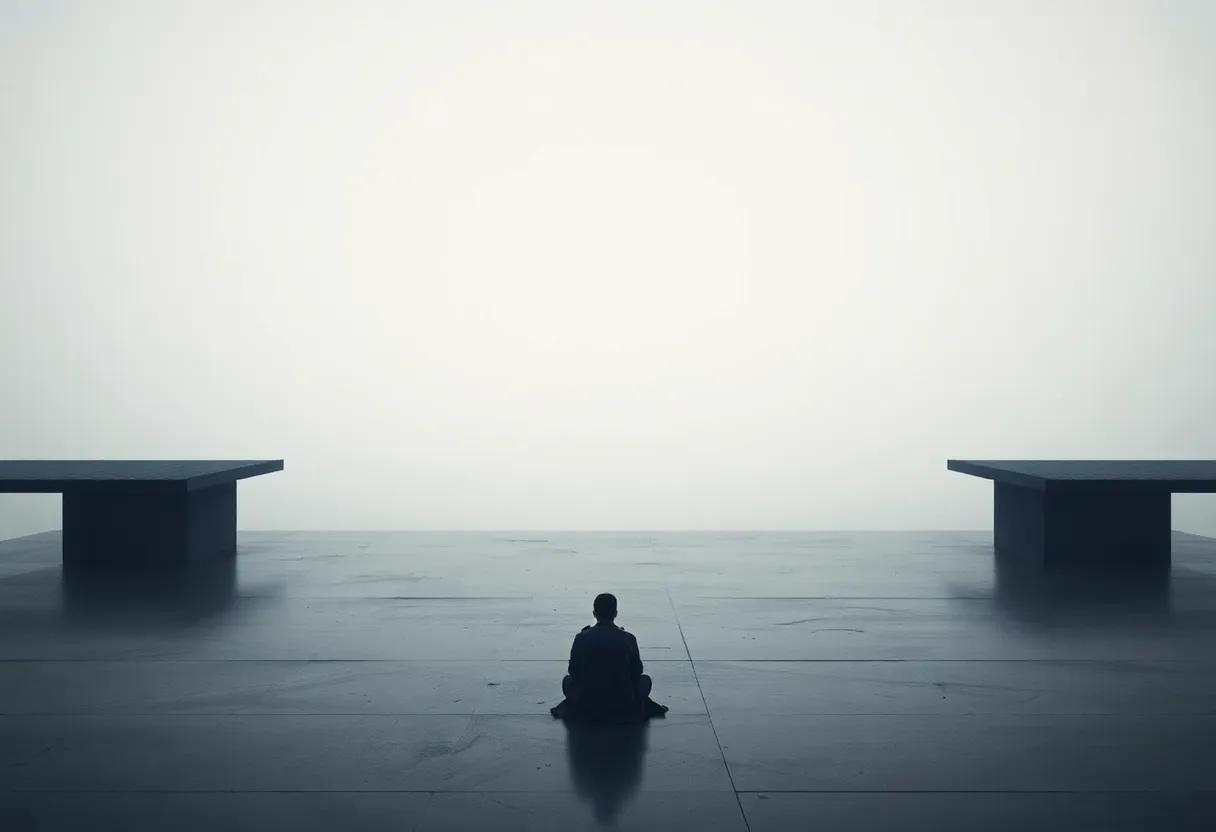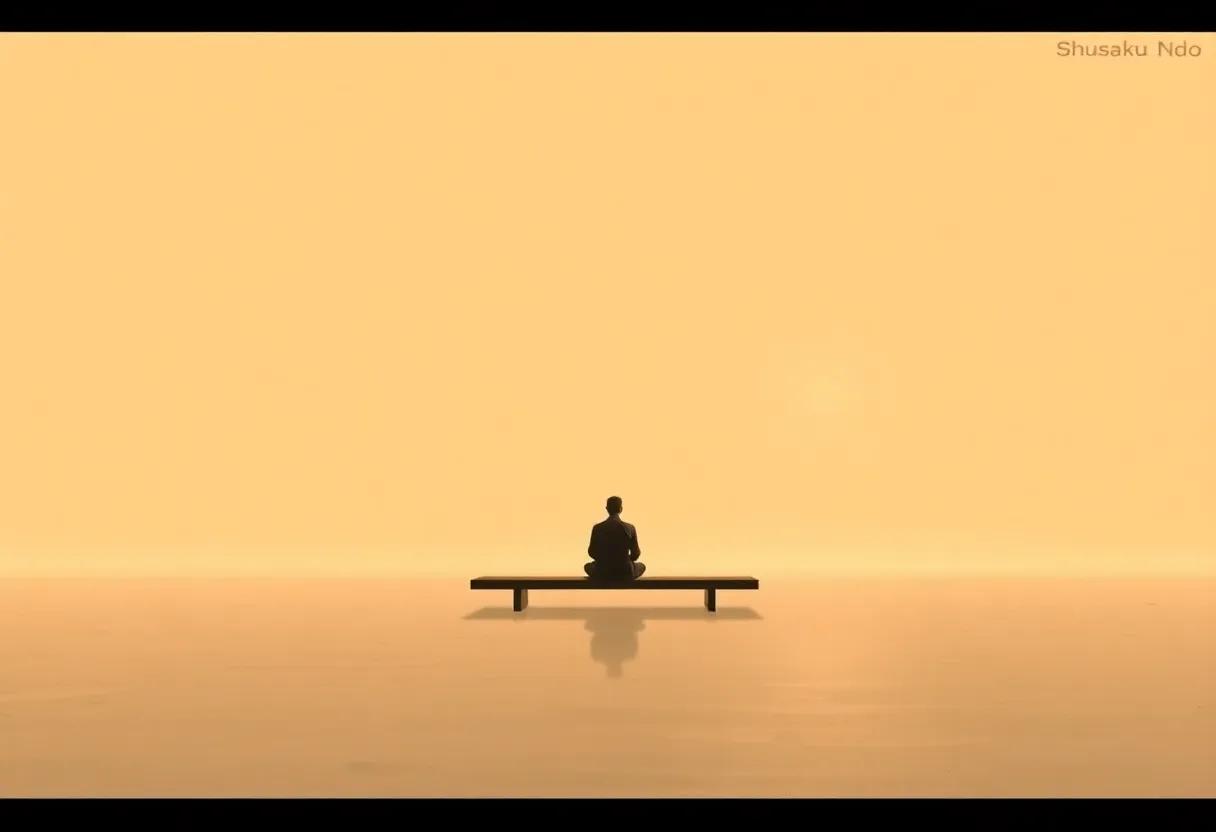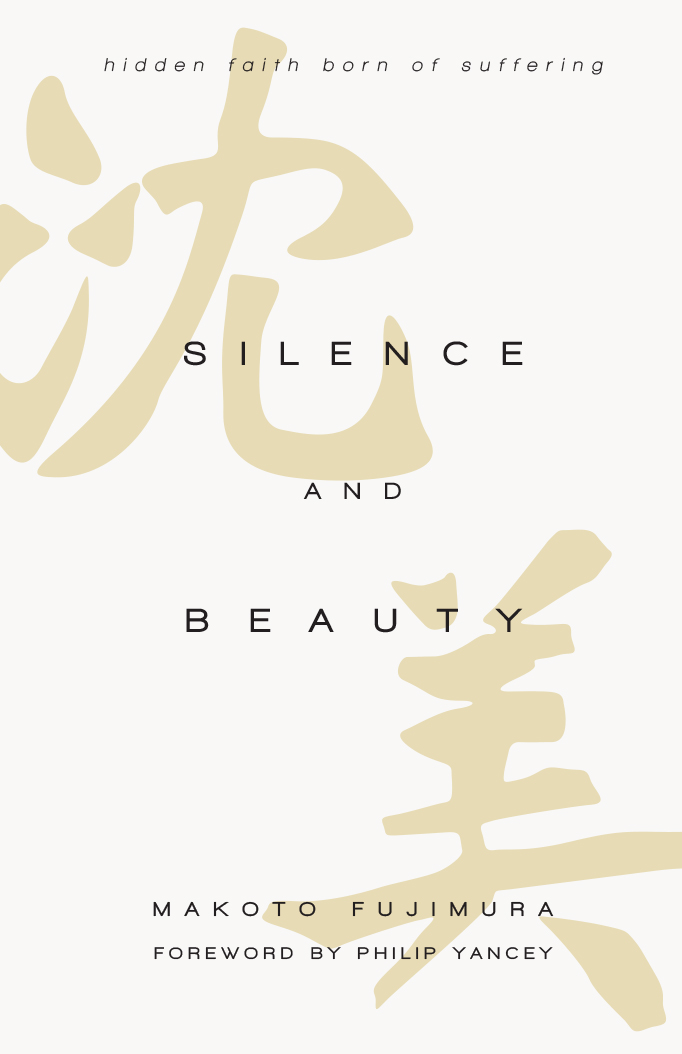In the vast landscape of literature that grapples with the complex interplay between belief and skepticism, Shūsaku Endo’s Silence stands as a quietly powerful beacon. Echoes of Faith and Doubt: A Thoughtful Review of Endo’s Silence invites readers to delve into the profound depths of a narrative that neither simplifies nor condemns,but instead embraces the tension that arises when faith is tested in the crucible of silence. This review navigates the haunting questions posed by Endo’s work, exploring its subtle reflections on spirituality, suffering, and the human spirit’s quest for meaning amid silence that both consoles and isolates.
Exploring the Spiritual Struggles and Moral Ambiguities Within Endo’s Narrative Landscape of Silence

Endo’s narrative masterfully unpacks the intricate dance between faith and doubt, weaving a tapestry where spiritual struggle is not merely a backdrop but a living, breathing entity. Characters are thrust into morally ambiguous terrains where the boundaries of right and wrong blur, compelling them-and readers-to confront unsettling questions. Silence strips away absolutes, revealing a world where divine presence is elusive, and the cries of the soul echo unanswered. This exploration calls attention to the internal fissures experienced by those wrestling with allegiance to belief in the face of profound suffering and cultural clash, highlighting the paradox of faith that demands both resilience and surrender.
The tension between cultural identity and religious conviction further complicates the moral landscape, challenging preconceived notions of heroism and cowardice. The profound silence encountered becomes a metaphorical canvas for doubt,where acts of apostasy and defiance defy simplistic moral categorization. Consider the following:
- Faith as endurance: The burden of maintaining belief amidst persecution.
- Moral ambiguity: choices marred by impossibility and survival.
- Cultural dissonance: The clash between Western Christianity and Eastern traditions.
| Character | Spiritual Challenge | moral Dilemma |
|---|---|---|
| Rodrigues | Silence of God in suffering | Apostasy vs Compassion |
| Kichijiro | Guilt and Redemption cycles | Betrayal vs Survival |
| Ferreria | loss of Faith | Resignation vs Defiance |
The Intricate Portrayal of Cultural Conflict and Religious Persecution in the Heart of Seventeenth Century Japan

Endō Shūsaku’s silence meticulously captures the harrowing tension between steadfast faith and the overwhelming force of persecution during Japan’s edo period. the narrative plunges readers into a world where Christianity, seen as a foreign menace, is brutally suppressed by authorities resolute to eradicate its influence. through the eyes of the protagonist, a Jesuit priest grappling with his spiritual convictions, the novel explores the profound psychological and cultural hurdles faced by converts and missionaries alike. The clash is not merely one of religion but a collision of identities-Western dogma versus Japanese tradition-manifesting in both external violence and intimate betrayals.
key elements that shape this portrayal include:
- Silence as both a literal and metaphorical force: The haunting quietude of God’s absence in moments of torture symbolizes the crisis of faith.
- Complex characters torn by loyalty and survival: Converts who outwardly renounce their faith while inwardly wrestling with guilt and hope.
- Socio-political dynamics: The shogunate’s strategic use of religious persecution to maintain political control and cultural homogeneity.
| Aspect | Representation in Silence |
|---|---|
| religious Symbolism | Crosses hidden beneath the soil |
| Power Dynamics | Shogunate vs Jesuit missionaries |
| Cultural Identity | Faith juxtaposed with Japanese honor codes |
How Endo’s Use of Symbolism Deepens the Thematic Resonance of Faith Tested by Silence and Suffering

Endo masterfully wields symbolism as a quiet but potent force,allowing Silence to transcend the immediate narrative and resonate on a profoundly spiritual plane. The recurring motif of silence itself is no mere absence of sound; it becomes a powerful symbol of divine inscrutability and the overwhelming void faced by believers when faith is unanswered. Through subtle imagery-such as the oppressive stillness enveloping the persecuted Christians or the ominous withholding of God’s voice amid suffering-Endo invites readers to grapple with the unsettling tension between hope and despair. this silence is not passive emptiness but an active, haunting presence that tests endurance, blurring the boundaries between abandonment and mysterious grace.
- Fallen priests and cracked crucifixes: symbols of fractured faith and internal conflict.
- Unyielding landscapes: minimalist yet evocative backdrops reflecting spiritual desolation.
- The physical torture of bodies: vivid reminders of the soul’s trial under corporeal agony.
These layered symbols deepen the thematic exploration of faith tested by silence and suffering, inspiring readers to consider the paradox that true faith may sometimes lie not in overt divine intervention, but in the endurance of its absence.The juxtaposition of visible torment with inaudible divine response challenges conventional notions of catechism, encouraging an embrace of doubt as part of spiritual maturity. Ultimately, Endo’s symbolism reframes silence not as defeat but as a space where faith, though strained, is still profoundly alive-whispering to the soul beyond words, beyond pain.
A Close Examination of the Psychological Turmoil Experienced by Missionaries Caught Between Loyalty and Doubt

Within Silence, Endo masterfully captures the internal conflict that missionaries endure-torn between unwavering loyalty to their faith and the encroaching shadows of doubt.These men, often depicted as paragons of conviction, are humanized through their psychological vulnerability. Their faith is not a fortress but a fragile construct, constantly under siege by external persecution and internal hesitation.this duality invites readers to reflect on the nature of belief itself: is faith truly tested only in certainty, or does it find its most profound expression amidst doubt? Endo’s portrayal reveals that doubt, rather than being a sign of weakness, is embedded deeply in the spiritual journey, complicating the simplistic binaries of belief and apostasy.
The emotional labyrinth navigated by these missionaries can be broken down into several often-overlooked facets, each intertwining to fuel their turmoil:
- Fear of betrayal: not just to their communities but to their own sense of self.
- Isolation: The crushing loneliness that accompanies spiritual exile, both physical and mental.
- Compassion and Guilt: Conflict over whether endurance or surrender best serves the suffering of those they aim to protect.
| Psychological Aspect | Manifestation | Spiritual Consequence |
|---|---|---|
| Despair | Loss of hope during persecution | Strengthening or eroding faith |
| Silence | Divine absence felt painfully | Deepening existential questioning |
| Resilience | persistence despite doubt | Redefinition of loyalty |
The Narrative Structure and pacing: Crafting a Reflective Journey Through Isolation and Inner Conflict
Endo’s narrative in Silence masterfully balances the slow burn of internal turmoil with the external pressures of a hostile surroundings. The pacing deliberately lingers on moments of silence-both literal and metaphorical-inviting readers to immerse themselves in the protagonist’s isolating spiritual struggle. These pauses are not mere gaps but profound spaces where faith is both tested and deconstructed. Through a rythm that alternates between oppressive stillness and sudden upheaval, Endo crafts a reflective journey that mirrors the dissonance between belief and doubt.
- Deliberate pacing: Scenes unfold with measured restraint, allowing tension to seep in naturally.
- intersecting timelines: Flashbacks layered with present suffering enhance the complexity of silence.
- Internal monologues: These provide windows into the deeply conflicted psyche of the protagonist.
The narrative structure itself acts almost like a landscape,jagged and unpredictable,much like the spiritual terrain the characters traverse.Below is a brief comparison of key narrative elements that highlight how pacing serves the thematic depths of the novel:
| Element | Effect on Reader | Thematic Resonance |
|---|---|---|
| Extended silence | Heightens tension and invites introspection | Dissonance between spoken faith and silent suffering |
| Sudden bursts of action | Breaks monotony and reorients emotional focus | The brutality of persecution against fragile belief |
| Fragmented timeline | Disorients, reflecting inner conflict | Memory’s role in shaping doubt and conviction |
Endo’s Language and Imagery: Creating an Atmosphere that Evokes Both Beauty and Despair
Endo’s mastery lies in his deliberate use of language that dances between poetic elegance and stark realism. His prose flows with a haunting rhythm, evoking an atmosphere where beauty is tinged with inevitable melancholy. through vivid imagery, such as the relentless rain washing over barren landscapes or the flicker of distant candles in oppressive darkness, he crafts scenes that are as emotionally charged as they are visually potent. This duality invites readers to linger in moments suspended between hope and despair, making the spiritual turmoil of the characters palpably immediate.
Within this evocative backdrop, Endo employs symbolic elements that deepen the narrative’s emotional impact. Consider the contrast highlighted in the table below, showcasing how light and darkness serve as metaphors throughout Silence:
| Symbol | Meaning | Emotional Effect |
|---|---|---|
| Light of the candles | Flicker of faith, fragility | Hope tinged with vulnerability |
| Darkness of the night | Silence, oppression | Despair and isolation |
| Rain | Purification, sacrifice | Renewal shadowed by suffering |
Such imagery does not merely decorate the narrative; it molds the reader’s emotional landscape, fostering an immersive experience where faith’s fragile light flickers beneath the heavy weight of doubt. This deliberate intertwining of beauty and despair is what cements Endo’s prose as a compelling conduit for exploring the complexities of spiritual endurance.
The Role of Silence as a Powerful motif Shaping Reader Interpretation and Emotional Response

Silence in Silence is far from mere absence of sound; it is a living, breathing presence that reverberates through the minds and hearts of readers. This motif operates on multiple levels – it evokes a spiritual void, a historical silence imposed by persecution, and the internal struggle of faith against doubt. By deliberately withholding dialog or explicit emotional exposition at crucial moments, Endo crafts a space where readers must confront the unsaid and the unresolved. This narrative quietness intensifies the weight of decisions and sacrifices, inviting contemplation rather than dictation, and compelling readers to become active participants in the interpretive process.
Moreover, the emotional landscape shaped by silence is complex and multifaceted. It evokes feelings of uncertainty, isolation, and empathy while together offering solace and transcendence. Readers often find themselves oscillating between discomfort and reflection as the quiet moments mirror the characters’ own spiritual limbo. This dynamic can be outlined as follows:
- Silence as a space for introspection: Encourages readers to fill gaps with personal interpretations.
- Silence as emotional amplification: Heightens the intensity of unseen turmoil and unspoken grief.
- Silence as a form of resistance: symbolizes endurance amidst oppression and the complexity of spiritual surrender.
| Aspect | Effect on Reader |
|---|---|
| Physical Silence | Heightens realism, evokes tension |
| Spiritual Silence | Creates empathy, engages contemplation |
| Historical Silence | Conveys oppression, deepens historical context |
Balancing Historical Accuracy with Fictional Depth: Endo’s Skillful Blend of Fact and imagination

Endo masterfully navigates the delicate interplay between documented history and imaginative storytelling, crafting a narrative that is as compelling as it is indeed authentic. Through meticulous research, the novel grounds itself in the harsh realities faced by 17th-century Japanese Christians, yet it never sacrifices the nuanced, inner turmoil of its characters to mere historical recounting. This balance allows readers to experience not just the factual events but also the emotional and spiritual conflicts that history alone cannot fully capture.Endo’s approach encourages a profound empathy, inviting audiences to inhabit the uncertain space where faith grapples with silence and doubt.
The novel’s strength lies in its ability to infuse factual frameworks with rich fictional layers:
- Historical settings that convey the physical and social environment with vivid accuracy.
- Complex character development, giving voice to diverse perspectives within the Christian community under persecution.
- Imaginative dialogues and internal reflections that reveal the psychological depth behind outward struggles.
Below is a concise comparison illustrating how Endo intertwines fact and fiction to enrich the narrative:
| Element | Historical Fact | Fictional Depth |
|---|---|---|
| Setting | 17th-century Japan’s Christian persecution | Atmospheric portrayal of isolation and fear |
| Main Character | Missionary priests historically known | Inner conflict portrayed through nuanced thoughts |
| Plot Events | Actual missions and raids | Personal struggles and moments of doubt |
The Ethical Questions Raised and Their Relevance to Contemporary Discussions on Faith and Identity

Endo’s Silence confronts readers with profound ethical dilemmas that resonate powerfully within today’s conversations on faith and personal identity. The novel’s core tension-the choice between public denial and private belief-forces us to question what it truly means to hold onto faith in environments where it is persecuted or vilified. This silent struggle challenges the binary assumptions frequently enough present in contemporary debates, urging a deeper, more nuanced understanding of spiritual resilience. It highlights the complexity behind acts of silence and concealment, asking whether they are betrayals or radical acts of faith preserved under unbearable pressure.
In many ways, the ethical landscapes navigated in Silence mirror ongoing discussions about authenticity and self-expression in diverse cultural and religious contexts. The questions posed by Endo invite us to reflect on:
- Integrity: How do we balance personal conviction with social survival?
- Complicity: When does silence become a form of harm or resistance?
- Identity: Can faith be an internal experience rather than a public declaration?
These themes remain relevant in current dialogues on interfaith relations and secularism. As an example, some individuals today wrestle with the tension between their religious upbringing and their evolving personal beliefs-similar to the characters whose external choices mask inner turmoil. To better visualize these relationships, consider the following table illustrating the intersection of faith expressions and societal pressures:
| Faith Expression | Societal Pressure | Potential Ethical Conflict |
|---|---|---|
| Open confession | Persecution or ostracization | Risk of harm vs. honesty |
| Silent belief | Demand for conformity | Preservation vs. perceived betrayal |
| Outward denial | Legal or cultural enforcement | Self-protection vs. loss of identity |
How the Characters’ Personal Journeys Illuminate Broader Themes of Endurance, Betrayal, and Redemption

Within Silence, each character’s path acts as a prism refracting the novel’s central themes. The protagonist’s painful wrestling with faith under unimaginable pressure embodies a soul’s endurance amid silence and persecution.Simultaneously occurring, the betrayal experienced-whether through the actions of others or self-imposed doubt-serves to deepen the narrative’s tragic complexity. These moments of fractured trust do not simply reflect individual failure but echo a larger spiritual crisis, reminding readers that betrayal is as much a contest of conscience as it is a rupture of relationship. the characters’ internal conflicts are not isolated struggles; they function as conduits through which the worldwide questions of belief, sacrifice, and moral ambiguity resonate powerfully.
Endo masterfully uses these personal journeys to illustrate that redemption does not arrive as an unambiguous triumph but through nuanced reconciliation with one’s limitations and doubts. Redemption in Silence is portrayed less as absolution and more as a subtle, ongoing process, a quiet acceptance amidst turmoil.this dynamic is reflected clearly in the table below, capturing the essence of key character experiences:
| Character | Personal Struggle | Broader Theme Reflected |
|---|---|---|
| Father Rodrigues | Silent suffering and questioning faith | Endurance amid spiritual testing |
| Kichijiro | Repeated betrayal and fear-driven weakness | The human frailty behind betrayal |
| Inoue | Struggles with public confession and inner conviction | Redemption as complex, personal reconciliation |
Recommendations for Different Readers: Who Will Find Profound Meaning in Silence and Why

For readers who grapple with the intersection of faith and doubt,Silence offers a labyrinth of emotions and reflections that resonate deeply. Those drawn to theological inquiry will appreciate the novel’s unflinching portrayal of spiritual crises amidst historical persecution. It challenges believers and skeptics alike to confront uncomfortable questions about silence-not only divine silence but the human silence that complicity often demands. Academic readers and philosophy enthusiasts will find rich material in Endo’s nuanced exploration of moral ambiguity and cultural clash, where faith is not a simple beacon but a complex, sometimes fragile, flame.
Casual readers seeking a story of endurance and empathy will also connect with the characters’ raw humanity and enduring hope amidst suffering. The narrative’s texture-woven with vivid historical detail and profound psychological insight-creates a meditative experience rather than a didactic one. Below is a speedy guide to who might find particular meaning in the novel’s themes:
- Spiritual seekers: Those wrestling with doubts or searching for meaning beyond traditional doctrines.
- History buffs: Readers fascinated by the clash between Western Christianity and Japanese culture in the 17th century.
- Philosophy lovers: Individuals interested in ethical dilemmas and existential reflections.
- General fiction readers: Anyone drawn to profound character studies set against challenging circumstances.
Comparing Silence to Other Works in the Genre: A Testament to Endo’s Unique Literary Voice

Unlike many works within the historical and religious fiction genre that frequently enough lean heavily on dramatization or overt moralizing, Endo’s Silence offers a contemplative and intricate exploration of faith under duress. His narrative does not merely portray spiritual trials as grand gestures of martyrdom but delves deeply into the subtle, often painful inner conflicts that define genuine belief. Where other authors might focus on external conflicts,Endo turns the lens inward,crafting characters whose struggles with doubt and silence resonate on a profoundly human level. This approach not only challenges readers to grapple with the complexities of faith but also sets Endo apart as a voice that refuses easy answers or clichés.
To highlight this distinctiveness, consider how Silence contrasts with popular works in the genre:
- Internal Versus External conflict: While many novels emphasize action-driven plots, Endo centers the narrative on internal psychological and spiritual battles.
- Cultural Contextualization: endo situates faith within the complex socio-political tapestry of 17th-century Japan, unlike Western-centric perspectives common in similar literature.
- Tonal Nuance: The novel’s somber and reflective tone eschews melodrama, embracing ambiguity and silence as narrative tools.
| Work | Focus | tone | Spiritual Lens |
|---|---|---|---|
| Silence | Internal faith struggle | contemplative, somber | Ambiguity and doubt |
| The Power and the Glory (Graham Greene) | Moral conflict and redemption | Grim, urgent | Grace amid sin |
| The Brothers Karamazov (Dostoevsky) | Philosophical and theological debate | Intense, existential | Faith and reason |
In essence, Endo’s Silence transcends conventional genre boundaries by weaving together cultural nuance, psychological realism, and a profound meditation on silence itself as a spiritual force. This fusion not only enriches the story but also affirms Endo’s unique literary voice-one that continuously invites readers to reflect on the frequently enough-unspoken depths of belief and doubt.
The Impact of Silence on Modern Spiritual Literature and Its Continuing Cultural Significance

In the realm of modern spiritual narratives, silence emerges not merely as absence but as a profound presence that challenges believers and skeptics alike.Endo’s silence serves as a compelling prism through which the intricate relationship between faith, doubt, and cultural identity is refracted. Silence here functions as both a test and a form of communication – a void pregnant with meaning where divine presence is both obscured and revealed. This nuanced exploration has deeply influenced contemporary authors who seek to engage with spirituality beyond conventional dogma,inviting readers to embrace ambiguity and the ineffable.
Its cultural significance endures as silence encapsulates a universal tension: the human need for certainty amid spiritual uncertainty. The ongoing dialogue around this theme can be distilled into several key facets:
- Spiritual Ambiguity: Encourages embracing paradoxes within faith journeys.
- Cultural Memory: Preserves the legacy of marginalized voices in religious history.
- Existential Reflection: Prompts inward examinations of belief, purpose, and suffering.
- literary Innovation: Inspires narrative structures that foreground silence as a thematic device.
| Aspect | Contemporary Relevance |
|---|---|
| Faith in Silence | Questioning divine absence |
| Cultural Identity | Preserving suppressed histories |
| Emotional Resonance | Engagement through vulnerability |
| Storytelling | Emphasis on what’s unsaid |
About Shusaku Endo The Author Whose Personal Faith and Experience Breathed Life Into This Timeless Tale

Shusaku Endo’s life was a tapestry woven with threads of spiritual struggle, cultural dissonance, and an unyielding quest for truth. Born in Japan to Catholic parents, Endo walked a path that few of his contemporaries dared to tread-grappling openly with the tension between Eastern traditions and Western religious ideals. His own sense of alienation within his faith community allowed him to breathe unparalleled authenticity into his characters,particularly in Silence. This novel is not merely historical fiction but a profound reflection of Endo’s internal battle with doubt, suffering, and the silence he felt from God amidst persecution. Through his vivid prose, Endo invites readers to confront the silence that frequently accompanies faith, challenging simplistic notions of belief and martyrdom.
- Personal Catholic identity in a predominantly non-Christian Japan
- Exploration of cultural and moral ambiguity
- longstanding themes of suffering, endurance, and redemption
Endo documented his complex spiritual odyssey across his career, often intertwining it with historical events to illuminate the tensions faced by Christians in 17th-century Japan. His intimate knowledge of this complex history and his own experiences of isolation and contemplation allowed him to craft a narrative that transcends time and place.The table below highlights key aspects of Endo’s background that shaped his storytelling:
| Aspect | Influence on work |
|---|---|
| Japanese Catholic heritage | Explores faith in a non-Christian society |
| Encounter with Western culture | Highlights cultural clash and identity conflict |
| Battles with doubt and silence | Central theme in silence |
| Historical research | Authenticity in portraying persecution |
In the quiet aftermath of reading Silence, one is left drifting between the echoes of faith and doubt that Endo so masterfully explores. This is a novel that refuses easy answers, inviting readers to sit with discomfort and question the boundaries of belief. Whether you find solace in its silences or wrestle with its challenges, Silence endures as a profound meditation on the human spirit’s confrontation with the divine-and the silence that often lies between.It’s a work that lingers long after the final page, urging us to listen more closely to the whispers of our own faith and uncertainty.










